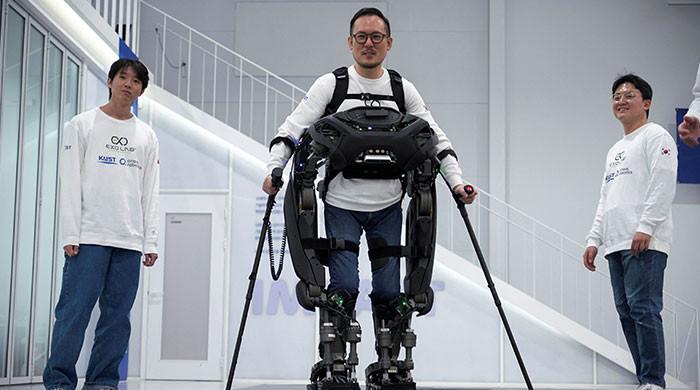Revolutionizing Mobility: The WalkON Suit F1 for Paraplegics
In an exciting development from South Korea, researchers at the Korea Advanced Institute of Science and Technology (KAIST) have unveiled a groundbreaking exoskeleton designed to help individuals with paralysis regain mobility. The WalkON Suit F1 is a lightweight, wearable robot that, when locked onto a user, allows them to walk, navigate obstacles, and even climb stairs.
Seamless Integration into Daily Life
The goal behind this innovative technology is to create a device that not only aids mobility but also fits seamlessly into the everyday lives of those living with disabilities. Kim Seung-hwan, a paraplegic and key member of the Exoskeleton Laboratory team at KAIST, recently demonstrated the capabilities of the WalkON Suit F1. Kim was able to walk at a speed of 3.2 kilometers per hour (about 2 mph), ascend a flight of stairs, and slide into a bench—all while using the exoskeleton.
"It can approach me wherever I am, even when I’m sitting in a wheelchair, and be worn to help me stand up, which is one of its most distinct features," Kim shared, sounding both proud and hopeful.
Technical Marvel: How It Works
Weighing in at just 50 kilograms (110 pounds), the exoskeleton is crafted from a combination of aluminum and titanium. Its design features 12 electronic motors that mimic the movements of human joints to facilitate smoother walking. To maintain user balance, it’s equipped with advanced sensors that monitor 1,000 signals per second, giving it the ability to predict the user’s movement intentions.
The robot is also equipped with "eyes"—lenses that analyze the environment, detect obstacles, and even gauge the height of stairs. This technology compensates for sensory limitations experienced by individuals with complete paraplegia, helping to create a more intuitive experience for the user.
Inspired by Movies, Driven by Compassion
Park Jeong-su, another member of the KAIST team, expressed that his inspiration for developing this technology came from the iconic Iron Man films. "After watching Iron Man, I thought it would be great if I can help people with a robot in real life," he said. His vision, along with Kim’s personal journey, drives the innovation behind the WalkON Suit F1.
Kim recently showcased the exoskeleton at the Cybathlon 2024, where he won the gold medal in the exoskeleton category. The event, designed to highlight assistive technologies, allowed developers with varying physical disabilities to demonstrate their creations. "I wanted to tell my son that I also used to be able to walk. I wanted to share a diverse range of experiences with him," Kim expressed, revealing the emotional motivation behind his participation.
A Bright Future for Mobility Aids
The WalkON Suit F1 not only represents a significant technical achievement but also embodies a profound commitment to enhancing the lives of those with mobility challenges. As technology continues to evolve, innovations like the WalkON Suit F1 pave the way for a future where individuals with disabilities can regain independence and experience life in new and exciting ways.
The AI Buzz Hub team is excited to see where these breakthroughs take us. Want to stay in the loop on all things AI? Subscribe to our newsletter or share this article with your fellow enthusiasts.




